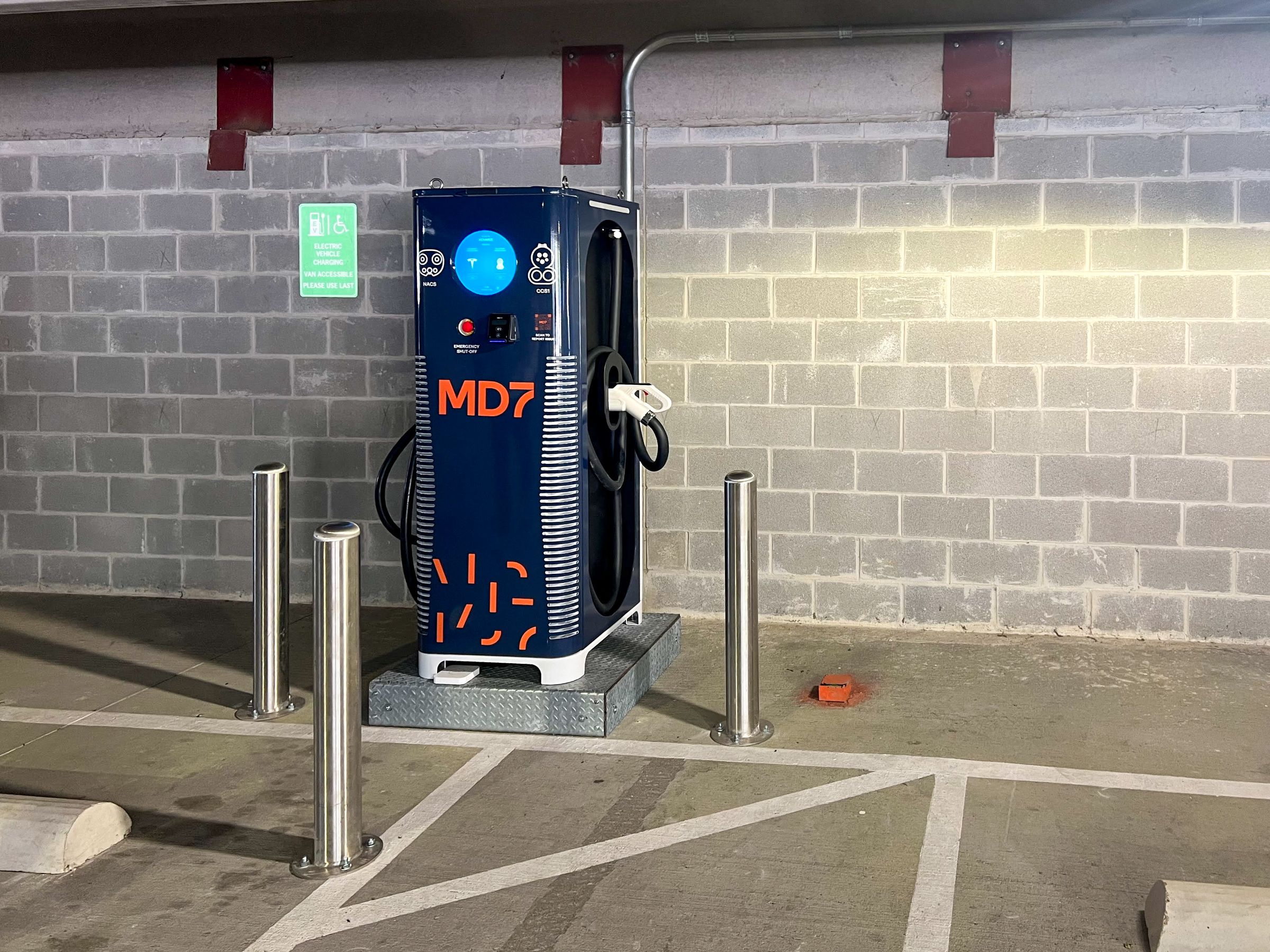Who Should Pay for In-Building Wireless Connectivity?
By Tom Leddo
Vice President
Traditionally…
Traditionally, wireless operators would build cellular networks that covered the overwhelming majority of the places that their subscribers live, work and visit while these same subscribers would frequently switch to private Wi-Fi networks at home, coffee shops, hotels and other places to lower their data charges or when the cellular network was congested. There were few in-building “cellular” systems.
The occasional exception would be a third-party Distributed Antenna System (“DAS”) system in a stadium, arena or other large venue such as a shopping mall that was installed and managed by either an operator, a venue owner or a third party that charged operators access to the DAS.
However, the exponential increase in demand for wireless data is now causing this traditional model to evolve. Cellular operators are racing to deploy DAS systems in large venues as fast as possible but these systems are expensive, often well in excess of $1 million. While this capital outlay makes sense for a Super Bowl stadium, campus environments or other high profile facilities, the economics simply do not work when scaled across multiple facilities, particularly office buildings and multi-family residential. And, while the still developing metro-cell and small-cell technology will make many more deployments more economical, it is still not yet serving as a single solution for all facilities that are beginning to have capacity issues. The economics of a small cell system are not yet fully developed but it is becoming apparent that it will work in some, but not all, buildings. And even if it did, the operators simply cannot build out every sports arena, concert venue, hospital, hotel, tourist area, office building (both large and small) and apartment complex in time to keep pace with demand.
Four General Categories for In-Building Coverage
Generally, the facilities that need in-building coverage fall into four categories.
- Large venues such as stadiums arenas and campus environments.
As mentioned above, there are certain venues that wireless operators are just going to build-out such as a football stadium that is hosting the Super Bowl. While it is not accurate to say that cost does not matter in a venue of this type, carriers are going to spend what is needed to make sure they have the capacity needed to make events at these types of venue seamless. There is no way a major operator that often sponsors events at stadiums and arenas is going to let tens-of-thousands of customers have a negative experience due to lack of capacity in an arena where they often even own the naming rights.
These are covered with a neutral host DAS. One carrier or a third party will build out the DAS with other carriers joining to share the network with some sort of cost sharing or other financial arrangement.
DAS networks of these types are common in facilities ranging from large stadiums and arenas to large office buildings and shopping malls.
Who Pays: – Typically the cellular operators pay either directly or through a recurring payment to the owner of the DAS system. However, some venues still have their own self-funded Wi-Fi installed as well.
- Large and medium-to-large buildings.
One step below the large venue, where providing enough capacity is a business necessity, are large hotels and office buildings where operators certainly would like to offer in-building coverage but simply may not have the time and/or budget to get to all of them. They will get to them if and when they can.
The challenge with buildings of this nature is that there are just so many of them. The owners and operators of these buildings realize they have capacity issues that may be affecting their customers and tenants.
Operators that are facing capacity issues do not need to build them all at this time. If an operator is having capacity issues in a particular area of town, they can build out a handful of in-building systems in the area and thereby reduce capacity on the macro network. The remaining buildings will need to either survive off of the existing macro coverage and/or install their own private Wi-Fi system.
Some of these buildings may in fact be large enough to justify a DAS installation. Others may be good candidates for the rapidly evolving small cell systems that can be installed for less money. But if the building owners know they need to improve connectivity and have no visibility into an operator’s build plan, they may opt to take measures into their own hands by developing a more robust, private Wi-Fi network.
They are faced with either waiting for the operators to come or building it themselves. And in a world where connectivity is now the fourth utility, they are finding it harder to wait.
Who Pays: – The operators do in some cases; the building owners do in others.
- Medium and small buildings
This category includes medium to small office buildings, apartment complexes, retail, restaurants, etc. They are starting to see the need for connectivity beyond that provided by the traditional macro network.
For example, the Md7 office in San Diego is on the third floor of a three story, 75,000 square foot building that overlooks the I-5/I-805 “merge” with 10 lanes of traffic. We are also next door to an apartment/condo complex with several hundred units that were recently constructed. We have seen a significant drop in bandwidth in the last year but our building is simply not large enough to justify an operator installing a DAS and we are probably several years away from an in-building small cell. Hopefully we will get a few adjustments to the macro sites near by, particularly as the new apartments begin to lease-up. In the meantime, we have to closely manage our Wi-Fi.
A second example is a new, fairly large, trendy restaurant and bar in downtown San Diego that was built in a very old, historic building where there was no 3G or LTE coverage available. While on a recent date night with my wife, the server gladly offered us the restaurant’s Wi-Fi password so we could post and tweet photos of our food and tell the world how much fun our date night was in their restaurant. Social media is key to driving their business and the new reality is that if people can’t use their smartphone in an establishment, they’ll leave.
While in both of these examples, the renting tenant is paying for Wi-Fi, many building owners are starting to acknowledge connectivity as a utility and are funding it themselves to keep their tenants satisfied.
Who pays: The building owners and/or their tenants.
- Residential
In 2009, I bought a new Femtocell device from my cellular service provider. My family had noticed that we had begun having problems connecting to the network and calls were dropping more frequently so I swallowed my pride and paid $250 to solve my carrier’s coverage problem. I expected to get maximum “bars” in my house easily and seamlessly. But my experience was far from plug and play. Actually when I called the carrier’s help desk they said something to the effect of “oh it doesn’t work with data plans yet. You’ll need to turn off the data portion of your Blackberry each time you walk in the house.” I promptly packaged it back up and returned it to the retail store.
Since that time two things have changed, I no longer use a Blackberry and my high hopes for a private femtocell in my home have dissipated. But Apple has solved both of those problems for me. I replaced the Blackberry with an iPhone and my femto with an Airport Extreme. I even solved my extended coverage problem by buying an Airport Express to stretch the Wi-Fi to the back of the house and backyard. I rarely make traditional phone calls at home; I generally text, post and use FaceTime. All of which are easy on my apple devices and free over Wi-Fi.
Who pays: The resident of course.
So What?
Wireless operators are obviously enhancing capacity with the largest venues first and then working their way down from there. But it is simply not realistic to expect them to completely underlay their entire macro network with a variety of microsites, aka the HetNet.
Even if they could reach every building, the capital expenditure required would be enormous and the operators already have to learn to operate in a new environment of 100% penetration and intense price competition.
The insatiable demand for bandwidth by smartphone users will not cease.
Building owners need to consider the reality about the new “fourth utility” – connectivity. Whether residential or commercial, tenants and customers within these buildings will continue to demand connectivity and begin to factor it into their decision about where they choose to live, work, shop, eat and all other daily habits.
Connectivity is now an expectation. We need to develop connectivity everywhere and, if not, consumers will begin avoiding the areas that don’t.
If you do not build it, they will not come.




